This Content Is Only For Subscribers
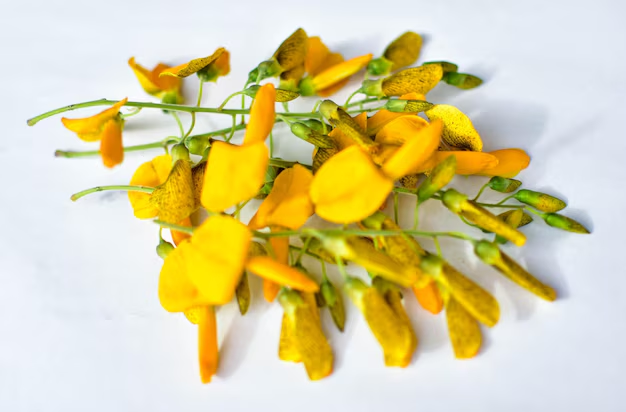
Bala(Country Mallow): Overview
Bala, or Country Mallow, is more than just a plant; it’s a whispered secret from the heart of nature, revered by traditional healers for its extraordinary gifts. From easing inflammation and soothing pain to boosting vitality and supporting the immune system, this potent herb has a myriad of uses and benefits, all rooted in its rich phytochemical profile. The effects of Bala are diverse, and its importance stems from its centuries-old usage in Ayurveda, along with increasing scientific validation. Ayurveda underscores its unique balancing properties, making it a key player in holistic well-being. Come with us as we explore the timeless treasure that is Bala, a botanical wonder with applications for today.
Did You Know? The name “Bala” in Sanskrit translates to “strength” or “youth,” reflecting the herb’s traditional use in promoting vitality and rejuvenation.
Table of Contents
Bala(Country Mallow): A Whisper from the Wild
Have you ever paused to wonder about the quiet healers among us – the plants that have nourished and mended generations? Today, we embark on a journey to discover the secrets of one such botanical marvel: Bala, also known as Country Mallow.
What is Bala(Country Mallow)? More than just a roadside weed, Sida cordifolia is a humble yet powerful herb, known by many names— Bariyar, Mahabala, and more, each echoing its cultural significance. Imagine it – a soft, unassuming shrub, silently offering its strength to those who seek it. Bala has been a constant companion in traditional medicine, especially within the ancient wisdom of Ayurveda. This is where we will begin our voyage into its history, medicinal properties, and modern relevance.
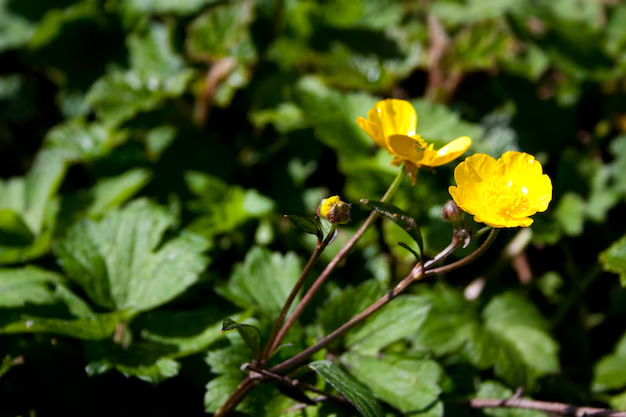
What is Bala (Country Mallow)? Meeting the Botanical Healer
To truly understand Bala, we must first meet it. Imagine a small, resilient shrub with heart-shaped leaves that feel like velvet to the touch. Its stems are covered in tiny hairs, and small, yellowish-orange flowers appear, like little suns nestled amongst the leaves. These flowers give way to round, capsule-like fruits, each one carrying the potential for new life.
Bala can be found gracing warm, tropical and subtropical landscapes, thriving in various soil conditions. It belongs to the Malvaceae family, a family known for its gentle, healing plants. Bala is more than just a plant; it’s a testament to the intricate beauty and resilience of nature.
The Feminine Heart of Sida cordifolia or Bala(Country Mallow): Botanical Elegance Unveiled
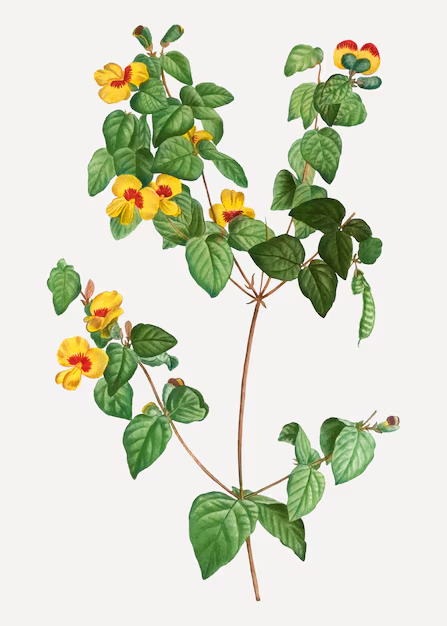
Now, let’s delve deeper into the heart of Bala(Country Mallow) floral structure. It is important to understand that when we use the term ‘female’ in botany, we are referring to the reproductive parts within a flower, and not to human gender.
The central part of the flower houses the pistil, with the stigma, a delicate landing pad for pollen. Below the stigma lies the style, through which pollen journeys to reach the ovary where the seeds begin to form, a magical process of life’s creation. It is here that seeds develop, carrying the essence of Bala’s healing power. This botanical dance of the female structures is not just about reproduction; it’s a reflection of nature’s intricate design, showing us its inherent wisdom and beauty.
Nature’s Poetry: The flower’s structure is not just functional; it’s an art form, a testament to the elegance and beauty in the natural world.
Delving into Ancient and Modern Wisdom: Ayurveda and Science Converge for Bala(Country Mallow)
The story of Bala is a beautiful tapestry woven with both ancient wisdom and modern science. For centuries, traditional healers in Ayurveda have revered Bala as a Rasayana, a rejuvenative herb capable of promoting longevity and vitality.
Ayurvedic Perspective of Bala(Country Mallow):
- In Ayurveda, Bala is described with specific qualities: Rasa (its taste, which is slightly bitter and astringent), Guna (its qualities like lightness and smoothness), Virya (its cooling potency), and Vipaka (its post-digestive effect). Importantly, Bala balances Vata, the energy of movement, and also Kapha, the energy of structure. This means it is particularly useful for managing pain, stress, and promoting overall health by balancing these key energies in the body.
Scientific Validation for Bala(Country Mallow):
- Modern science is now exploring Bala’s properties through research and laboratory tests. Studies have focused on its anti-inflammatory and analgesic effects and also its immune-boosting properties. Research has shown it has anti-microbial properties, and can help the body fight off infection. These early studies support what Ayurveda has long known.
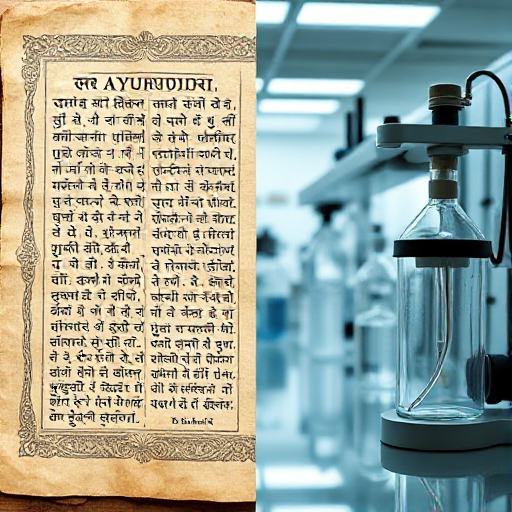
A woman named Meera in her 60’s, suffering from chronic joint pain was introduced to Bala(Country Mallow) by a local Ayurvedic practitioner. She used Bala(Country Mallow) oil and within weeks she reported significantly reduced inflammation and increased joint mobility. It is stories like this that give us an insight into the potential of this amazing plant.
The Chemical Symphony of Bala(Country Mallow): Understanding its Healing Power
The power of Bala(Country Mallow) lies in its unique chemical composition. Here’s a closer look at the key compounds found in the herb and their benefits:
| Component | Approx. Amount per 100g | Benefits |
| Alkaloids (e.g., Ephedrine, Vasicinone) | ~0.3 – 0.8g | Ephedrine: Supports respiratory health, acting as a decongestant; Vasicinone: May have bronchodilator properties and aid in breathing. |
| Flavonoids (e.g., Quercetin, Rutin) | ~0.2 – 0.5g | Potent antioxidants, reduce inflammation, protect cells from damage. |
| Fatty Acids | ~5-10g | Essential for cellular health, may have anti-inflammatory properties. |
| Phytosterols | ~0.1 – 0.3g | May help manage cholesterol levels, and may offer anti-inflammatory effects. |
| Tannins | ~1-3g | Offer astringent properties, may aid in wound healing, help with diarrhoea and aid in tissue contraction and repair. |
| Mucilage | ~5-10g | Soothes mucous membranes, can help with digestive issues and cough, has soothing properties. |
| Amino Acids | Traces | Essential for overall health, forming the building blocks of proteins. |
- The Synergy: These compounds work together, a symphony of healing, enhancing each other’s actions and leading to Bala’s therapeutic benefits.
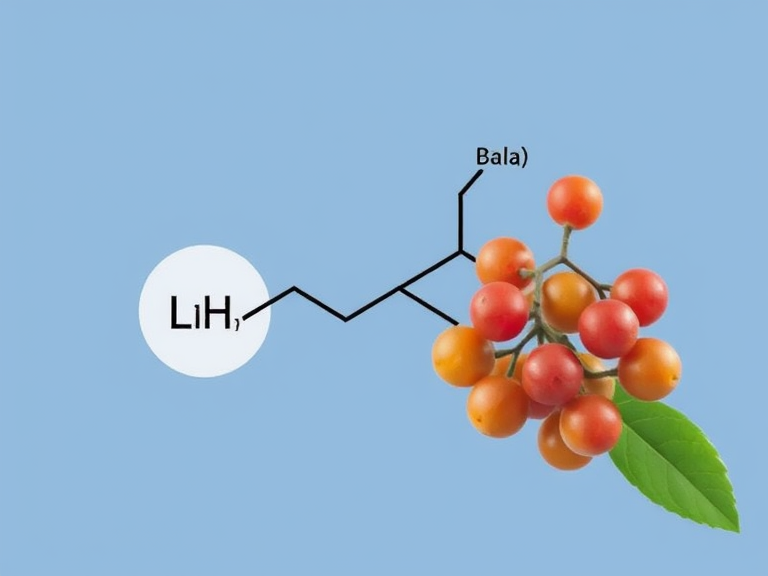
Experiencing Bala(Country Mallow): A Subtle Taste and its Journey to You
Bala has a slightly bitter and astringent taste. This taste profile isn’t just about flavor; it’s an indication of its powerful properties. As for availability, Bala can be found in many places: sometimes growing wild by the roadside, and sometimes cultivated in farms. You can find it in most well-stocked herbal stores and can buy it in dried form, as a powder, or in capsule form, and even in oil. Remember, where you buy the Bala from is just as important as taking it so be sure to buy from a trusted supplier.
Bala(Country Mallow): Embracing Different Needs
Bala’s benefits are wide-reaching, supporting both men and women in different ways.
- For Women: Bala offers support for reproductive health, can help with menstrual discomfort, and help women in their post-pregnancy recovery.
- For Men: Bala offers support for energy levels, stamina and overall vitality. It may also aid with muscle building and recovery, offering an all-natural alternative.
A Word of Caution: While the uses for Bala are vast, please consult with a healthcare professional before use to make sure it’s right for you.
The Healing Tapestry: Top 20 Uses and Benefits of Bala(Country Mallow)
| # | Use/Benefit | Description | Ayurvedic Perspective |
| 1 | Anti-inflammatory Champion | Reduces inflammation throughout the body, relieving joint pain and swelling. | Balances Vata and Kapha, essential for managing inflammation. |
| 2 | Natural Pain Relief | Relieves pain associated with arthritis, muscle aches, and other discomforts. | Calming effect of Bala helps reduce pain by balancing Vata Dosha. |
| 3 | Rasayana: The Rejuvenator | Promotes longevity, enhances vitality, and slows down the aging process by nourishing all the tissues in the body. | Strengthens Ojas (vital essence), which promotes overall health and rejuvenation. |
| 4 | Immune System Booster | Strengthens the immune system, enhances resistance to infections, and supports the body’s natural defenses. | Supports natural immunity by strengthening the body’s own mechanisms. |
| 5 | Nervine Tonic | Calms the nervous system, reduces stress, anxiety, and supports overall mental wellbeing. | Balances Vata Dosha which is associated with the nervous system. |
| 6 | Muscle Strength Enhancer | Aids in muscle development, increases strength, and helps in reducing muscle fatigue. | Provides nourishment for muscle tissues, supporting their growth and repair. |
| 7 | Respiratory Support | Alleviates coughs, colds, and congestion, helping to clear the respiratory system. | Helps in loosening mucus, and clearing the airway. |
| 8 | Digestive Harmony | Supports healthy digestion, reduces bloating, and improves nutrient absorption. | Improves Agni (digestive fire), reducing indigestion. |
| 9 | Wound Healing Aid | Promotes wound healing, reduces scarring, and provides natural antiseptic properties for infections when applied topically. | Astringent properties aid in tissue healing and reduce inflammation. |
| 10 | Skin Nourisher | Reduces skin inflammation, soothes irritation, and offers relief from skin conditions such as eczema, boils and rashes. | Cools and balances Pitta Dosha, associated with skin issues. |
| 11 | Adaptogenic Agent | Helps the body adapt to stress, reduces stress hormones, and supports mental well-being. | Supports the body in managing stress and promotes balance. |
| 12 | Powerful Antioxidant | Protects cells from free radical damage, combating premature aging. | Balances Pitta Dosha, preventing cellular damage, and offers anti-aging support. |
| 13 | Women’s Health Guardian | Supports women’s reproductive health, alleviates menstrual discomfort, and helps in post-pregnancy recovery. | Balances Vata and Pitta doshas associated with menstrual cycles and post partum recovery. |
| 14 | Men’s Vitality Enhancer | Supports men’s vitality, boosts energy, and enhances physical endurance. | Strengthens Shukra dhatu, reproductive tissues. |
| 15 | Joint Mobility Support | Provides relief from joint pain, reduces stiffness, and enhances flexibility. | Balances Vata Dosha to reduce joint discomfort and improves overall flexibility. |
| 16 | Bone Health Promotor | Strengthens bone tissue, helps maintain bone density and accelerates fracture healing. | Provides nourishment for bone tissue (Asthi dhatu), which supports skeletal strength. |
| 17 | Natural Energy Booster | Provides a sustained source of energy, combating fatigue and tiredness. | Balances Vata Dosha, reducing fatigue and increasing overall energy levels. |
| 18 | Detoxification Aid | Helps to flush out toxins from the body, supports the body’s natural detoxification processes, and reduces toxic load. | Supports Ama Pachana, which is detoxification of the body by balancing all three Doshas. |
| 19 | Muscle Fatigue Reducer | Reduces muscle fatigue, supports muscle recovery, and helps in boosting physical endurance. | Balances Vata dosha that causes fatigue, promoting relaxation and faster muscle recovery. |
| 20 | Vata Balancing Powerhouse | Helps in alleviating imbalances caused by Vata dosha, such as anxiety, digestive issues and insomnia. | Reduces Vata related symptoms, by grounding the energy of Vata. |
When to Exercise Caution for Bala(Country Mallow): Precautions and Contraindications
- Pregnancy and Breastfeeding: Avoid using Bala during pregnancy and lactation.
- Heart Conditions: Those with existing heart issues should use Bala with caution.
- Blood Pressure: Use Bala cautiously if you have high blood pressure.
- Diabetes: Consult with your doctor before using it if you are diabetic, to ensure it doesn’t interfere with blood sugar management.
- Medication Interactions: It may interact with medications such as MAOIs, and stimulants.
- Allergies: Exercise caution if allergic to plants in the Malvaceae family.
- Surgery: Discontinue the use before any surgery.
- Disclaimer: Remember, always seek advice from a qualified professional before beginning use.
Safety First: While Bala offers many benefits, it’s crucial to approach herbal remedies with respect and knowledge.
Conclusion: Embracing the Wisdom of Bala(Country Mallow):
Bala, Country Mallow, or Sida cordifolia is more than just a plant; it’s a profound healer, a whisper from nature’s heart. It offers both traditional wisdom and emerging scientific validation. While the benefits are many, it is important to proceed with knowledge and caution. This is our call to you: always approach traditional remedies with respect and care, and seek guidance from a healthcare practitioner where required.
Let’s continue to learn and grow in our understanding of the nature around us, so we can live in balance and with vibrant health.

FAQs: Quickly Know About Bala (Country Mallow):
- Q: What is Bala(Country Mallow) used for?
- A: Country Mallow (Bala) is traditionally used for various purposes, including reducing inflammation, relieving pain, supporting the immune system, promoting vitality, and aiding in respiratory and digestive health. It’s also used in Ayurveda as a rejuvenative herb.
- Q: What is the Bala(Country Mallow) plant in English?
- A: The Bala plant is commonly known as Country Mallow in English. Its botanical name is Sida cordifolia.
- Q: What is the Malayalam name of Bala(Country Mallow) drug?
- A: In Malayalam, the Bala plant is often referred to as “Kurunthotti” (കുറുന്തോട്ടി).
- Q: देश मैलो का उपयोग किस लिए किया जाता है? (What is Country Mallow used for in Hindi?)
- A: देश मैलो (Country Mallow) का उपयोग पारंपरिक रूप से सूजन कम करने, दर्द से राहत देने, रोग प्रतिरोधक क्षमता बढ़ाने, जीवन शक्ति को बढ़ावा देने और श्वसन और पाचन स्वास्थ्य में सहायता करने सहित विभिन्न उद्देश्यों के लिए किया जाता है। इसका उपयोग आयुर्वेद में एक कायाकल्प करने वाली जड़ी बूटी के रूप में भी किया जाता है।
Side Effects, Dosage, and Safety: Bala(Country Mallow)
- Q: What are the side effects of Country Mallow?
- A: While generally considered safe, Country Mallow can cause side effects in some individuals, including potential interactions with medications, particularly those related to heart conditions, and possible gastrointestinal upset. It’s contraindicated in pregnancy and breastfeeding. Always consult a healthcare professional before use.
- Q: How to take Bala(Country Mallow) churna (powder)?
- A: Bala churna (powder) can be taken with warm water or honey. The dosage varies depending on the condition being addressed and should be determined by an experienced Ayurvedic practitioner or healthcare professional.
- Q: Can we use Balasudha daily?
- A: Balasudha, a specific Ayurvedic formulation, should be used as directed by a healthcare practitioner. Long-term daily use may not be appropriate for everyone.
- Q: How to use Bala(Country Mallow) taila (oil)?
- A: Bala taila (oil) is typically used for external application. It can be gently massaged onto the skin or joints to help relieve inflammation and pain. Always follow a healthcare provider’s or product label’s instructions.
- Q: Is Mallow safe to eat?
- A: While some species of Mallow are edible, Sida cordifolia (Country Mallow/Bala) is primarily used for its medicinal properties and is not typically consumed as a food.
- Q: Is Mallow good for kidneys?
- A: There isn’t substantial scientific evidence to definitively state that Mallow is good for kidneys. While it may have some diuretic properties, further research is required. Consult your healthcare provider for specific concerns about kidney health.
- Q: Is Mallow poisonous to humans?
- A: Country Mallow (Sida cordifolia) is not generally considered poisonous to humans when used appropriately. However, it’s essential to use it responsibly, avoiding high doses, and adhering to recommended guidelines.
Parts of the Plant: Bala(Country Mallow)
- Q: What is Bala(Country Mallow) fruit?
- A: The fruit of the Bala plant is a small, round, capsule-like structure containing the seeds. It’s not typically consumed but is part of the plant’s reproductive cycle.
- Q: What is the benefit of Bala fruit?
- A: The primary benefit of the bala fruit is that is contains the seeds which continue the life cycle of the plant and the properties of the plant are concentrated in the seeds which can be used medicinally.
- Q: What is virgin fruit?
- A: “Virgin fruit” is not a standard term used in botany or nutrition. It might refer to fruit in its natural, unprocessed state. However, “virgin” is not a scientific term used in relation to fruits.
- Q: What is Sita fruit?
- A: “Sita fruit” is another name for Custard Apple, also known as Sugar Apple (Annona squamosa).
- Q: What is queen fruit?
- A: “Queen fruit” often refers to Mangosteen (Garcinia mangostana).
- Q: What is mummy fruit?
- A: “Mummy fruit” isn’t a widely recognized name for a specific fruit. It might be a nickname or local reference, not a common botanical or culinary term. It could also be referencing dates or figs because of their dried wrinkled appearance.
- Q: What is Cinderella fruit?
- A: “Cinderella fruit” is not a standard term used in botany or nutrition. It might be a local reference or a marketing term for a specific kind of fruit.
- Q: Can we eat jujube at night?
- A: Yes, jujubes can be eaten at night. They are not known to cause any sleep disruption and might aid in digestion, but moderation is key.
- Q: How to eat bilva fruit?
- A: Bilva (Bael) fruit is often eaten fresh when ripe, or the pulp is used in drinks. It can also be dried or used in jams and preserves.
- Q: Can we eat jamun fruit daily?
- A: Jamun can be eaten daily in moderate quantities as part of a balanced diet. Its high fiber content and unique properties make it beneficial, but large amounts may cause digestive upset.
- Q: Who should not eat jamun?
- A: Individuals with a history of low blood sugar, those prone to allergies, or who are scheduled for surgery should use caution when consuming jamun.
- Q: Is jamun good for kidneys?
- A: Yes, Jamun is considered good for kidneys, as it has antioxidant and diuretic properties, that aid in overall kidney health. However, you should consult your doctor first if you have a specific kidney health condition.
- Q: Is jamun good for piles?
- A: Yes, the high fiber content in jamun can be helpful for managing piles (hemorrhoids) by promoting regular bowel movements and preventing constipation.
- Q: What are the side effects of Jamun?
- A: When consumed in moderation, jamun is generally safe. However, excessive consumption can lead to sore throat or digestive upset.
- Q: Can I drink water after eating Jamun?
- A: It’s generally advised to wait for a short time (about 30 minutes) after eating Jamun before drinking water, as it may cause digestive discomfort in some individuals.
- Q: Is Jamun hot or cold?
- A: According to Ayurveda, Jamun has a cooling effect on the body.
- Q: What is the best way to take jamun?
- A: Jamun can be eaten fresh or used in jams, juice and vinegar. It is best to consume jamun in moderation.
- Q: How many dates to eat per day?
- A: A serving of 3-5 dates per day is often considered a healthy moderation.
- Q: Can we eat apples at night?
- A: Yes, apples are generally safe to eat at night. However, some people may find the fiber content can cause some digestive discomfort if consumed too close to bedtime.
- Q: Which fruit is best at night?
- A: Fruits that are generally good to eat at night include cherries, kiwis, and berries as they have properties that may promote sleep quality. However, moderation is key.
- Q: Can I eat 5 apples a day?
- A: While apples are nutritious, eating five a day may be excessive and may lead to digestive issues. Moderation is always key.
- Q: What is the best time to eat bananas?
- A: Bananas can be consumed any time of day. Many find them to be a great pre or post-workout snack due to their energy and potassium content.
- Q: Is 2 bananas a day too much?
- A: For most individuals, two bananas per day is not considered too much and can be part of a healthy diet. But as always, moderation is important.
- Q: What is the healthiest fruit?
- A: Many fruits are incredibly healthy, and the “healthiest” can depend on individual needs. Berries, apples, bananas, and citrus fruits are all excellent choices.
- Q: How to eat apple with skin?
- A: Eating apples with the skin is beneficial as it contains many nutrients and fibre. Be sure to wash the apple properly before consuming.
- Q: Is boiled apple good?
- A: Yes, boiled apples are good. Boiling makes them easier to digest, and may be a good option for people with sensitive stomachs.
- Q: Can I rub apple on my face?
- A: Yes, you can rub apple on your face. Apples contain antioxidants that may help to brighten the skin. Always be sure to wash the skin after application.
